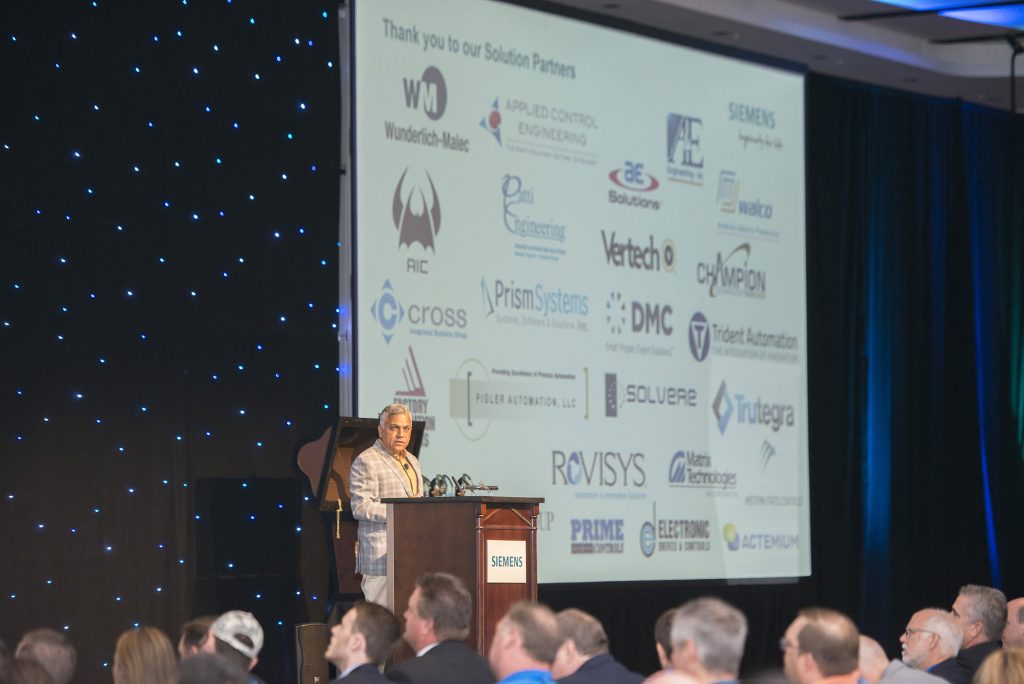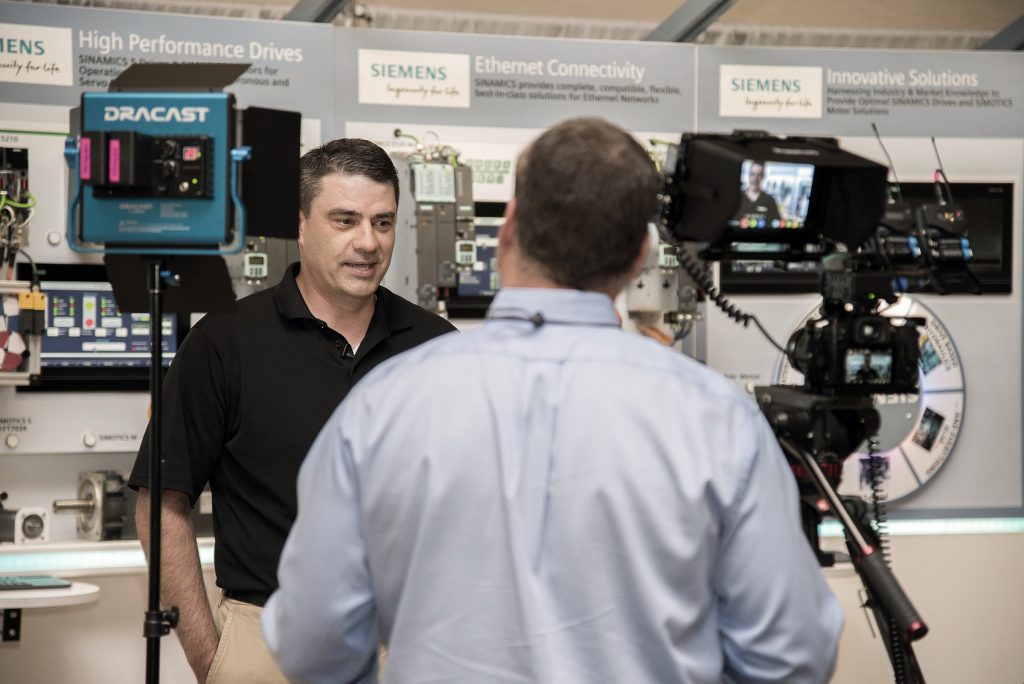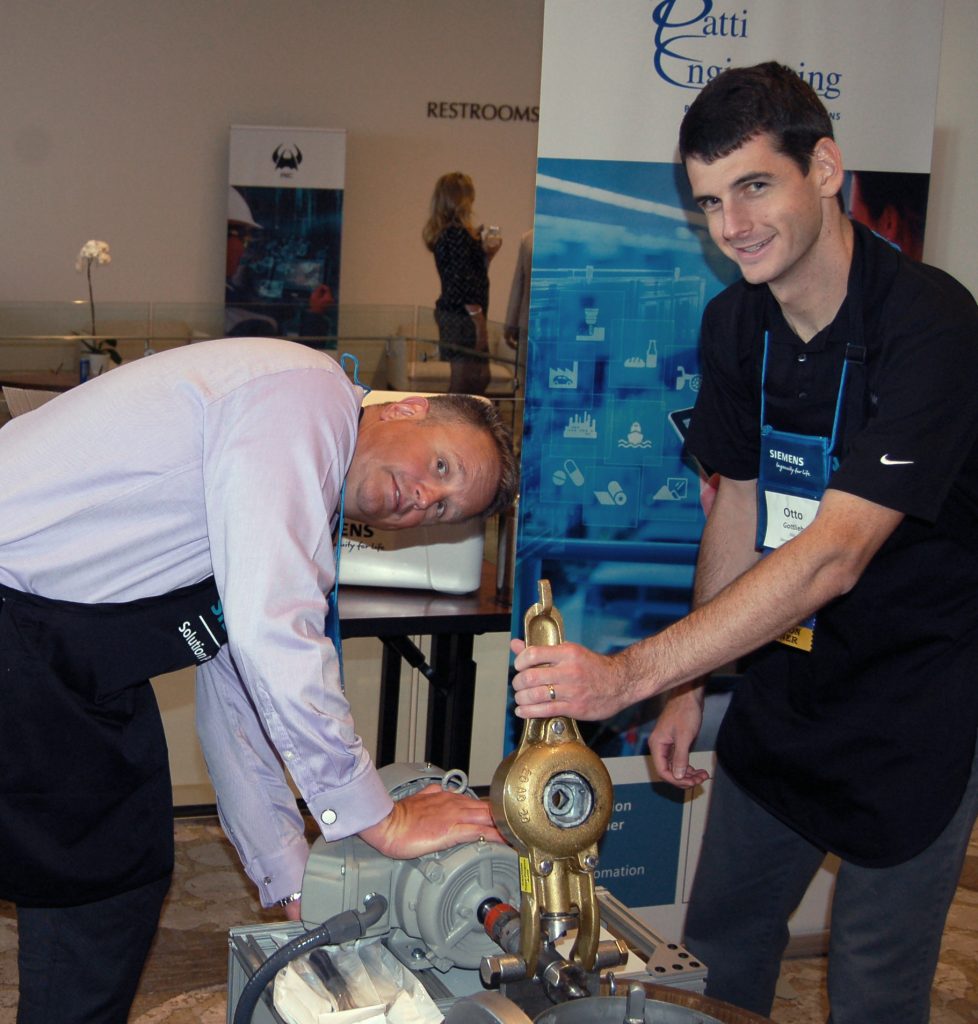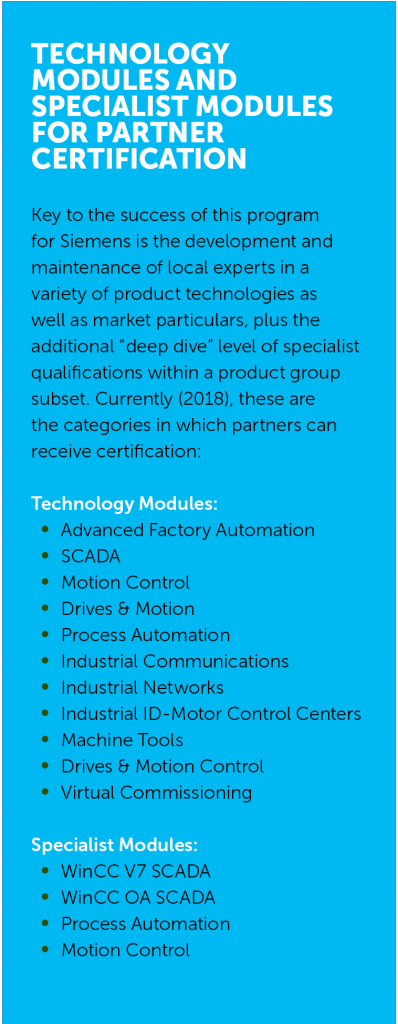The task of bringing products, services and technology innovations to the myriad manufacturing and processing market segments that constitute the American industrial landscape has always occurred, in various iterations. America went from the local shop to the manufacturing hub, from horse-and-wagon distribution to rail-connected warehouses, catalogs mailed nationwide to today’s online procurement sites for literally everything needed in a factory or a facility.
Likewise, the technologies and ability to integrate them first came in the form of the “man from the factory” and the journeyman fix-it teams, and later as consulting engineers and the first value-added resellers (VAR) seen in industry, who advised their customers on not only what to use but how to use it for better results in their manufactured products and output.

As the automation, big data, industrial internet of things (IIoT) and Industry 4.0 have ramped up at light speed over the recent decades, an entirely new entity has emerged in the market – solution partners. These firms do not manufacture anything of their own, but they have highly skilled engineers and hands-on providers of practical solutions to a company’s production challenges. They bring a full array of product, automation and data management solutions to an end user or an OEM, an essential skill at this time in industry, when all those aspects require integration and sustainability, even to the point of “future-proofing” the factory for next generation tech developments.
An example of such entities are the Siemens Solution Partners, today codified and licensed under a formal business program at this global company. The program seeks to identify, qualify and develop system integrators and engineering firms to deliver high-quality products, services and support in the fields of automation, electric drives, motion control, networks and power products. Working from a foundation of mutual benefit, the Solution Partner and Siemens collaborate to provide a base of customers with competitive advantages to win increased market share.
Siemens seeks out partners with either a market or a geographic strength, as well as particular product or integration specialty competencies. These areas of expertise are then supported by the products, application engineering, and delivery to market strategies at Siemens to affect the optimum solutions for customers, whether they build airplanes, boats, medical apparatus or automobiles. Likewise, there are current partners in the Siemens stable who focus on the process industries, machine tool market and discrete manufacturing segments, as well as the packaging, materials handling, distribution and the power generation functions in industry.
Through the Siemens Totally Integrated Automation (TIA) Portal, these partners enjoy access to a broad spectrum of products, software, communications, data management and integration services from the company.

In conjunction with the products and services provided, Siemens also delivers comprehensive training, warranty and marketing efforts to its partners, thereby strengthening the core competencies of the partner immediately upon completion of the Solution Partner Program agreement. As a Siemens Solution Partner, Titus Crabb from Vertech, an integrator based in Arizona, observes, “I met Peter Treible (Siemens manager for the program) at a CSIA conference and we immediately saw the benefits of working together. Our customers need us to deliver digitalization solutions across their enterprises, and the Siemens product offering is a great fit including MES, plant floor automation, industrial networking, and SCADA solutions. Vertech is connected to a number of the players in alternative power gen technologies as well as end users in the advanced PLC/SCADA, wireless and industrial networking fields. The program has introduced our team to a solid group of people at Siemens, with whom we co-sell on tech, functional and communications platforms. The certification process is very comprehensive and has added significantly to our credibility in the local market.”
Keith Jones from Prism Systems in Mobile, Alabama agrees. “We’ve been a Solution Partner since 2000 and our focus is less geographic and more tech-based. As specialists in wireless and network security as well as PLC and DCS, we do business in a variety of locations, helping various types of companies succeed, whether the solution involves HMI and SCADA or the software and communications for SAP/MES/ERP databases, wherever software is used in the customer’s enterprise. The Siemens relationship is one of our most successful, precisely because we push out of the comfort zones together, taking our customers into technology solution areas they may not have known or experienced. As we like to say, it enables us to maintain a company culture that’s buzzing with teamwork and innovative thinking. The more complicated, the better we like it,” Jones muses.

Sam Hoff, CEO of Patti Engineering in Michigan, emphasizes the certification process. “There are a lot of companies who just want the partner body count. A plaque and some product on the shelf and you’re in business. With the Siemens program, we were required to have at least two engineers in every technology module or specialist module (see sidebar) certified and we appreciated that thoroughness. In today’s manufacturing environment, it’s all about analytics, as the pressures to do more with fewer people drive more creative thinking and utilization of data in new ways.” This last comment dovetails with the recent appointment of Patti Engineering as a partner for Mindsphere, the Siemens “platform as a service” concept where data is collected, then prioritized with standard or customized apps. This data is then analyzed and with trigger signals communicated to plant personnel or even outside distributors to deliver, for example, a soon-to-be failing motor replacement to the customer’s loading dock, based on a predictive maintenance protocol.
Peter Treible is the National Solution Partner Program Manager at Siemens. He notes that the program, as it stands today, has been in place for about 10 years, though many partners have had much lengthier relationships with Siemens. “We have long perceived the changing role of the system integrator and also the needs of the various market segments we serve, as each presents its own set of unique challenges,” he notes. Siemens, as Treible details, had specific challenges in the U.S. market, as it sought to expand its market share. “We were seeking consistency plus quality sources on a local basis, from design engineering to solution selling. In our prior iteration, the Solution Provider Program, we were experiencing situations where some participants were simply not being proactive and we knew that scenario had to change,” he admits. About 12 years ago, as a result, Treible conducted a rigorous survey of end users, engineering firms and machine builders alike, to determine the best course of action. Based on those findings, he authored the original program for the U.S. market, in parallel with the launch of an extended global program.
“We concluded our future partners would not be fashioned in the same mode as those of our competitors. There were specific expectations on both sides and we always proceeded on the premise of mutual benefit through mutual and very proactive participation.” That strategy continues to this day with the Solution Partner Advisory Board, which routinely meets to review the status of the program and suggest improvements, such as entirely new tracks for partner training and certification, in light of emerging or refining technology developments in the various market segments. Additionally, this Solution Partner community interfaces with the User Advisory Board, to ensure the program delivers results to the expectations of End Users. This collaborative culture is demonstrated each year at the Siemens Automation Summit, where Siemens, their Solution Partners and a cross-section of End Users together present best practice results. It is also demonstrated through the culture of Partners working together on projects and Partners sharing their own internal best practices.

There are today approximately 1600 Solution Partners worldwide, with about 100 of those in the U.S. In the U.S. market, each partner works in tandem with local Siemens authorized distributors to complement their own talents and services for the customers.
The benefits of the program to the partner include collaboration with Siemens engineering, free training on products and software, priority access to support teams, engineering tools plus hands-on and written testing for certification for enhanced brand value as a Solution Partner and a “quality first time, every time” pledge to the customer.
For Siemens, the benefits of this program comprise expanded market access, plus total solution selling from a single source. “In bygone times, we’d have separate teams talking to the design, processing, packaging and distribution teams at the end user manufacturer. Today, that manufacturer interacts with a geographically local single source, experienced with the specific application requirements and an expert in applying Siemens technology, who can deliver a total solution. That’s a big difference,” Treible relates.
 In the final analysis, he concludes, “It’s all about collaboratively investing in the partnership, delivering world-class technologies and then training and certifying our Solution Partners to efficiently deliver quality results consistently to the customer.”
In the final analysis, he concludes, “It’s all about collaboratively investing in the partnership, delivering world-class technologies and then training and certifying our Solution Partners to efficiently deliver quality results consistently to the customer.”
Aumir Syed, the head of the Partner Management group at Siemens, adds, “I’ve been with Siemens for over 20 years, starting as a PLC programmer and moving into project management, then working with both the end user and builder communities, so it’s been a very diverse experience, from which I’ve learned the value of our partners in many markets on several continents. A key to the success of this program, especially in the U.S., was to get end users recognizing Siemens as a viable player in the market and then, perhaps more importantly, having them appreciate our partners as being equal to their Siemens counterparts in terms of competence. With the rigorous certification program and training partner personnel on every level, we believe we are achieving these goals.” He notes the need to marry the product to the process and also the sea change in the market that occurred when “…people finally understood the Design for Manufacturing concept was here to stay.” He cites the old way of thinking in the metalworking world, for example, was to design, then build tools and jigs, manufacture something, see how it looked, then modify to go into production. Today, however, the process runs from design to virtual simulation of the part, definition of the ergonomics on the machine as well as the people, conveyors, robots and transfer mechanisms, then writing the PLC program and only then beginning to build the machine to make the part, as simulated.
“This means, our partners are there to hold hands with the customer,” Syed says, “by which I mean they must be familiar with the entire process, from the perspective of the vertical market conditions as well as the end-to-end process chain of the automation and manufacturing system.”
“We are selecting our Solution Partners to go on our journey to digitalization with the customer. We are already engaging a number of new partners who can seamlessly translate the virtual commissioning of a machine and the mechatronic concept designer into the reality of production on the factory floor or in process. It requires a new vision for them and for us. We appreciate those who will naturally gravitate in this direction as well as those who will focus on hardware and maintenance. All are needed in the factory of the future.”
About Siemens Corporation
Siemens Corporation is a U.S. subsidiary of Siemens AG, a global powerhouse focusing on the areas of electrification, automation and digitalization. One of the world’s largest producers of energy-efficient, resource-saving technologies, Siemens is a leading supplier of systems for power generation and transmission as well as medical diagnosis. With approximately 351,000 employees in 190 countries, Siemens reported worldwide revenue of $88.1 billion in fiscal 2016. Siemens in the USA reported revenue of $23.7 billion, including $5.4 billion in exports, and employs approximately 50,000 people throughout all 50 states and Puerto Rico.



















